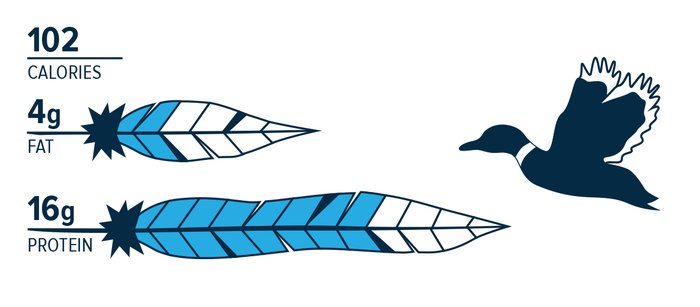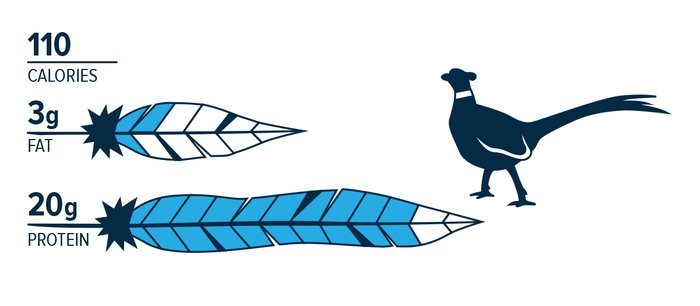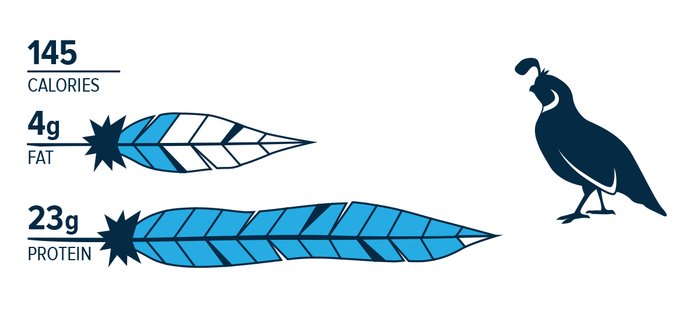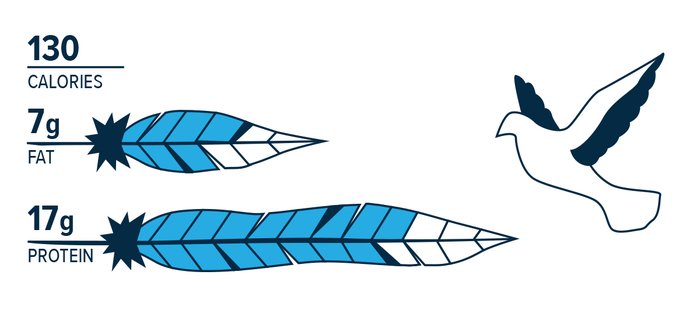Grilled chicken breast is practically the lifeblood of mass-gaining strength athletes everywhere. And it makes sense: A standard, 3-ounce serving clocks in at roughly 20 grams of protein, just over 1 gram of fat, and about 100 calories. These are some impressive stats when you're trying to pump up your protein intake without all the extra "stuff."
Unfortunately, eating a steady diet of chicken, chicken, and more chicken is about as exciting as watching nothing but C-SPAN all day. So if you're ready to mix up your diet and try something new, consider the not-so-boring world of game birds.
Wild Goose
Goose is definitely a fattier cut of meat than chicken, delivering about 12 grams of fat and 24 grams of protein per 3-ounce serving. But unless you're really trying to lean out, that extra fat content isn't likely to cause any real harm. Fat has long since been cleared of its "devil" status. A 2006 study published in Medicine and Science in Sports and Exercise, found that whole milk consumed after a workout led to greater utilization of amino acids for protein synthesis compared to skim milk—despite its extra fat content.[1] In other words, a little added fat isn't likely to hurt your muscle-building progress, and it could even help.
Plus, a well-cooked wild goose tastes more like roast beef than a bird. The trick is to select a smaller, younger bird (roughly 8-12 pounds), then roast it in a roasting pan, almost like you would a turkey. The resulting dark meat is the perfect break away from your standard white-meat chicken breast.

Duck
Duck has a bad rap for being fatty, too. And yes, the fat content of duck is higher than that of chicken, but most of the fat is in the duck's skin. If you don't eat the skin, the nutrition content of a 3-ounce serving is surprisingly similar to that of chicken: 102 calories, 16 grams of protein, and 4 grams of fat. But here's the deal: Duck, like goose, is a dark-meat bird, so it tastes more like the dark meat on a turkey or the meat on chicken thighs. If you're a die-hard fan of white meat, duck may not be the right alternative for you.
That said, a well-cooked duck can be delicious, but you have to learn how to cook it correctly. When roasting a duck at home, it's important to continue pricking the skin as it roasts to allow the fat content in the skin to drain and reduce the oily taste of the meat.

Pheasant
If you're looking for a game bird that tastes more like chicken, pheasant may be your best choice. It's a lean bird with a combination of white and dark meat, and it actually does taste more like chicken—but with a richer flavor. If you eat the breast meat only, you're looking at a nutritional profile almost identical to that of chicken. A 3-ounce serving has 110 calories, 20 grams of protein, and 3 grams of fat.
And while you might be tempted to hit up your hunter friends for a bird or two, when it comes to pheasant, farm-raised birds actually offer up a better amino acid profile than wild pheasant.[2] They also tend to taste less "gamey." Just make sure you don't overcook them. Pheasants are lean, so cooking them for too long can make them dry and tough.

Quail
Quail are small birds, weighing in at about 4 ounces each, which means you need two to get enough meat for a single serving. Their tiny size makes them easy to cook, and they can be roasted, fried, braised, broiled, grilled, or sautéed. Like chickens, they have a combination of light and dark meat, but with a slightly more intense flavor. Their nutritional profile is almost identical to that of chicken, but with a few extra grams of fat — about 4 grams per serving to chicken's 1 gram.

Dove
Doves are another small bird with big flavor, but you have to cook them correctly or they will take on an iron-like taste. The challenge is that dove meat, like duck and goose, is dark and lean, so overcooking it can leave it tough and dry. This problem is compounded by the bird's tiny size: There's less meat to cook, so it's easy to overcook it. The trick is to marinate the meat overnight, or to wrap it in bacon before grilling, allowing the flavor and fat in the bacon to infuse the dove meat.
As long as you cook dove correctly, there's not much to dislike about it. A 3-ounce serving has about 130 calories, 17 grams of protein, and about 7 grams of fat, placing them squarely in line with the other game birds on this list.

Sourcing Game Birds
If you hunt, or know someone who does, you're all set. It's not always easy to find game birds at your local grocery store, but in most cases, all you have to do is ask the butcher to order some for you. It may take a couple days for the meat to come in, so call ahead and ask if you can pick it up on your next trip to the store. And if your local store can't source game meat for you, look for it online, or ask around at farmer's markets or local hunting clubs.
References
- Elliot, T. A., Cree, M. G., Sanford, A. P., Wolfe, R. R., & Tipton, K. D. (2006). Milk ingestion stimulates net muscle protein synthesis following resistance exercise. Medicine and science in sports and exercise, 38(4), 667-674.
- Brudnicki, A., Kułakowska, A., Pietruszyńska, D., Łożyca-Kapłon, M., & Wach, J. (2012). Differences in the Amino Acid Composition of the Breast Muscle of Wild and Farmed Pheasants. Czech Journal of Food Science, 30(4).
- Tsironi, M., Andriopoulos, P., Xamodraka, E., Deftereos, S., Vassilopoulos, A., Asimakopoulos, G., & Aessopos, A. (2004). The patient with rhabdomyolysis: Have you considered quail poisoning? Canadian Medical Association Journal, 171(4), 325-326.

